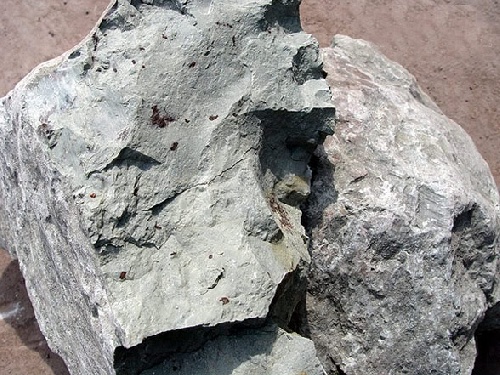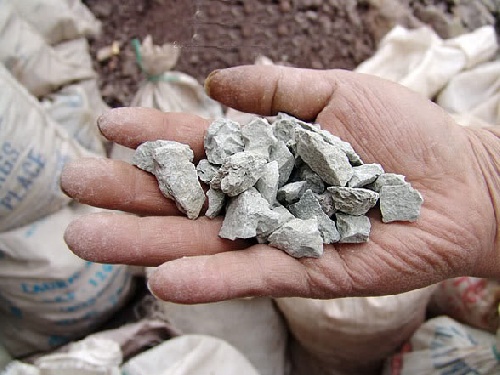A comprehensive guide on how to store Pu-erh tea, understanding the variables that affect taste, how to make Pu-erh tea taste better and protecting your investment.
samedi 28 janvier 2012
How To Store Pu-erh Tea GeneraliTea I
A comprehensive guide on how to store Pu-erh tea, understanding the variables that affect taste, how to make Pu-erh tea taste better and protecting your investment.
How To Choose A Chinese Yixing Teapot For Gong Fu Cha GeneraliTea IV
Yixing teapots are the heart of the Gong Fu Cha method of tea-making.
This detailed step by step guide from Chinese tea expert Daniel Lui
shows little known facts and tips on how-to assess quality, size, type
of clay, firing, matching with different teas and how-to clean and
season. Lots of charts and photos.
lundi 23 janvier 2012
Tea Ware Trends and an Intimacy with Objects Doc & Li Xin Rétro
Hojo : Tetsubin : Japanese Cast Iron Kettle&Niigata Tsuiki Do-ki Teapot which Made of 99.99% of Tin

What is Tetsubin (Cast Iron Kettle) About?
The Cast Iron Kettle: called a “Tetsubin” in Japanese, has been produced in Japan for hundreds of years. It is traditionally a hand crafted object that was developed as an utensil for use in the Japanese Tea Ceremony. These Cast Iron Kettles are made by pouring molten iron into either clay or sand molds. Clay molds are used in the production of high-end artisanal Tetsubin products, while those Tetsubin mass produced by the hundreds using sand molds are destined for common commercial sales and export. The function of the Tetsubin is unique. It significantly changes the taste of water. When brewing tea using water boiled in Tetsubin, the taste of the tea becomes very mellow and sweet. In addition, thanks to the iron content of the kettle, the resultant water gives us additional health benefits.


The Tsubame city (燕市) in Niigata Prefecture (新潟県) produces traditional hand-craft called Tsuiki-Doki. Tsuiki-doki means the “hammered” copper ware in English.
The tsuiki-doki includes not only tea equipment but also sake equipment, flower vase and many other accessories. The artist beats the plate and forms it into the desired shape of particular equipment. Normally, the copper plate is laminated with tin. At the moment, the brands that HOJO is introducing are using liner made of 99.99% tin. In fact, they were not using 99.99% tin in the old days. Once upon a time people concerned about the lead in tin and this has affected the Tsuiki-doki industry. Since then, most of manufacturers had stopped using ordinary tin and swtiched to 99.99% tin. The color of the surface of copper ware is created by the fire. Depending on the oxygen level during firing process, it creates different colors. The copper teapot comes with filter that enables efficient filtration of most type of tea leaves. There are 3 main reasons why HOJO like to introduce this equipment.
There are 3 main reasons why HOJO like to introduce this equipment.
1. Great Performance With this copper teapot, the internal tin liner which made of 99.99% of tin significantly improves the intensity of flavor and the depth of after taste. It gives a very clean taste with smooth and “silky” mouthfeel. After you have drunk the tea, it does not leave your mouth feeling dry or astringent; instead it gives a lingering after taste that is complex and evolving. This teapot is suitable for most types of tea, unless you are a person who may not like to enjoy strong after taste.
2. Great affinity not only with most of tea including Phoenix Dan Cong and Wuyi Oolong It is known that to select a matching tea pot for Phoenix Dan Cong and Wuyi oolong is very difficult, in particular the Phoenix Dan Cong oolong that is produced from very old tea tree. In our lineups, there are a number of clays that does not get along with this tea. Nevertheless, we found that this copper teapot is one of the exceptions (besides Gisui Tokoname Red Clay and Ken Sado Red Clay) that can go well with Phoenix Dan Cong oolong and Wuyi oolong. It gives a strong after taste with lingering sweetness that lasts for a long time. This tsuiki-doki copper teapot also shows great affinity with Puerh tea, not to mention about green tea and Taiwan oolong.
3. Great affinity with Tetsubin One of the difficulties that I encountered when using tetsubin is that different brands of tetsubin has different affinities with different types of clay. As for tsuiki-doki teapot, it goes well with both Kunzan and Suzuki Morihisa tetsubin. In particular, the combination between this teapot and Kunzan tetsubin gives a very smooth after taste.
The maintenance The tin liner may get dark spot in a long run. However the performance of tin does not really change or decrease even if the tin is oxidized. Most importantly, after using the tsuiki-doki teapot, we have to leave the lid off and let the teapot dried completely. When the teapot is used for a long time, some layer of scale might be formed on the surface of tin and this will protect the teapot from the rust. It is very important to stick to one type of water for both brewing and washing. I have experienced that the teapot that is used by my friend for a few months, when I used it with my own water, it never perform as how it is supposed to be! HOJO is currently supplying the brand called Seiho-Do. This brand is ran by only one artist whose age is over 70 years old. Due to no successor, the delivery takes sometime if stock is not available in our inventory.
... à Nos Chères Terres... Généralités

... à propos de l'argile de Yixing ...
On distingue trois variétés d'argile de Yixing :
Zi Ni, Lu Ni et Hong Ni
Zini (pourpre, généralement brunâtre après la cuisson)
On le trouve en petite quantité dans les gisements de minerai Jiani. Lorsque la Zini contient tellement de manganèse qu'elle présente des points sombres après la cuisson, elle est appelée Hei Xing ni, ou encore Tie Xing ni, ou Hei Xing Sha.
Qing Shui ni est l'argile couramment employée par les manufacture, une argile pure sans aucun mélange ni ajout, provenant du centre du gisement, une argile commune.
Di Cao Qing provient de la partie plus profonde, souvent d'un brun rougeâtre.
Di Cao Qing est généralement plus sombre et plus dense que la Qing Shui Ni.
Pin Zini désigne une Zini mélangée.
Luni, ou encore Ben Shan Lu Ni, où Benshan
Désigne la montagne d'origine, le mont Huanglong, est une variété de pointes de silice, que l'on trouve uniformément dans les veines de minerai Jiani, très rare.
Duanni est également rare, on la trouve parfois avec la Luni et la Zini.
Aujourd'hui, la Duanni provient de Tanxi ou Hufu, elle est aussi mélangée volontairement à la Luni et la Zini.
L'argile nommée Zima Duanni présente de nombreux points sombres qui rappellent le sésame.
Après cuisson, La Bai Ma Zi Ni est quasi identique à la Luni, elle se différencie par un grain plus épais et une moindre douceur au toucher.
Hongni est tirée du minerai Nenni.
Le Zhuni est un minerai très jaune, plus il est jaune, meilleur est le Zhuni.
La Xiao Hongni est d'un jaune plus sombre.
La Da Hongni provient du minerai Jiani, essentiellement Zini.
La Zhuni, est une argile spéciale, aux caractéristiques différentes.
Contrairement aux autres argiles, la Zhuni originelle provient de la montagne Zhao Zhuang, le Zhuni Lao.
Actuellement, vous ne trouverez la Zhao Zhuang Zhuni que… dans les musées !
La plupart de la Zhuni actuelle provient de Xiao Mei Yao et Hu Fu.
La Da Hong Pao ni provenait des monts Huang Llong, elle a été très populaire sous la dynastie Qing. Aujourd'hui, elle est extraite dans la région de Fudong.

Purple Clay Teapot in Japan
Terminology of Clay
For Yixing teapot, it is produced of Zisha. I would like to clarify the terminology of Zisha 紫砂(Purple Sand) once again. Zisha refers to crude clay rock that is produced in Yixing. Any clay that is produced outside of Yixing, other part of China included is not called Zisha even if its character is similar or identical.
Zisha is the mixture of 3 clays, red clay, purple clay and green clay in general. Different clay has different effect. Each type of clay has a different mineral composition and therefore makes the taste of tea obviously different. Various interactions or sort of ion-exchange reactions occur between the minerals that exist in water and the minerals in the clay.
Zisha is the mixture of 3 clays, red clay, purple clay and green clay in general. Different clay has different effect. Each type of clay has a different mineral composition and therefore makes the taste of tea obviously different. Various interactions or sort of ion-exchange reactions occur between the minerals that exist in water and the minerals in the clay.
Minerals could take different colors depending on the baking temperature and oxygen level
When iron is baked with oxygen, it oxidizes to become Fe3+ (Magnetite). On the other hand, iron becomes Fe2+ (Hematite) when it is baked with less oxygen or without it entirely. With less oxygen, fire generates carbon monoxide. This carbon monoxide will draw oxygen away from the iron.
The following picture shows 2 teapots that are produced from the same clay.

On the other hand, there are a number of teapot that is made of originally black clay. Those black teapots are mainly dominated by Manganese. The Manganese appears in black when it is baked with oxigen. Usually mannagese does not make taste better. Hence it is important to select teapot not only just based on the color, but also with proper understanding of clay.
What is the difference in effect using between artificially mixed clay and natural clay?
The natural clay and mixed clay gives a different effect, although they looks visually similar. The iron particle exists in natural red clay is in crystallized iron granule, just like gem stone. Artificially mixed red clay contains added iron which is ground by granulator. The shape of iron particle is very uneven and large surface area due to the hammering by granulator. Usually artificially added iron has very low melting point because of larger surface, which unable the clay to withstand high baking temperature up to >1200 degree C, while the melting point of iron particle in mixed clay is at around 600-800 degree C. Once iron particle get melted during baking, it liquidize and drastically loose the surface area.
Nowadays most of red clay teapots both in Japan and China are made from artificially mixed red clay. It is due to the reason that we start forgetting the effect of natural red clay and tends to choose teapot based on the outlook or the fame of the artist.
Inscription à :
Commentaires (Atom)
Translate

Archives
-
►
2013
(25)
- ► 18 août - 25 août (1)
- ► 4 août - 11 août (1)
- ► 5 mai - 12 mai (1)
- ► 21 avril - 28 avril (1)
- ► 14 avril - 21 avril (1)
- ► 7 avril - 14 avril (3)
- ► 31 mars - 7 avril (1)
- ► 24 mars - 31 mars (1)
- ► 17 mars - 24 mars (2)
- ► 10 mars - 17 mars (1)
- ► 3 mars - 10 mars (1)
-
▼
2012
(49)
- ► 12 août - 19 août (1)
- ► 5 août - 12 août (2)
- ► 29 juillet - 5 août (2)
- ► 17 juin - 24 juin (1)
- ► 27 mai - 3 juin (1)
- ► 20 mai - 27 mai (1)
- ► 6 mai - 13 mai (1)
- ► 29 avril - 6 mai (1)
- ► 22 avril - 29 avril (2)
- ► 15 avril - 22 avril (1)
- ► 8 avril - 15 avril (1)
- ► 1 avril - 8 avril (1)
- ► 25 mars - 1 avril (1)
- ► 18 mars - 25 mars (2)
-
▼
22 janvier - 29 janvier
(9)
- How To Store Pu-erh Tea GeneraliTea I
- Gong Fu Cha - The Complete Guide To Making Tea Gen...
- How To Buy Chinese Tea GeneraliTea III
- How To Choose A Chinese Yixing Teapot For Gong Fu ...
- Tea Ware Trends and an Intimacy with Objects Doc ...
- Hojo : Tetsubin : Japanese Cast Iron Kettle&Niigat...
- ... à Nos Chères Terres... Généralités
- Purple Clay Teapot in Japan
- Favorite Oolong & Hou De Asian Pdf
-
►
2011
(32)
- ► 21 août - 28 août (2)
- ► 14 août - 21 août (3)
- ► 7 août - 14 août (2)
- ► 31 juillet - 7 août (3)
- ► 12 juin - 19 juin (3)
- ► 5 juin - 12 juin (3)
- ► 29 mai - 5 juin (1)
- ► 22 mai - 29 mai (1)
- ► 1 mai - 8 mai (1)
- ► 24 avril - 1 mai (1)
Taiwanese Culture

Gao Shan Cha
(13)
Lin's Purion
(8)
Théière Porcelaine 12cl Taiwan
(7)
La M3T
(6)
Tasse Purion
(6)
Gaiwan Eilong
(5)
Oolong Taiwanais M3T
(5)
Oriental Beauty
(5)
Purion Teapot
(5)
Thés Rouges Taiwanais
(5)
Lin's Ceramic Kettle
(4)
Taiwanese Clay
(3)
Taiwanese Culture
(3)
Cultivar Luanze
(2)
Hou De Asian Documents Pdf Taiwanese
(2)
Petite Poire Zi Sha
(2)
Qi Lan 4
(2)
Tai Zui Jiu Oolong M3T
(2)
Taiwanese Modern Shui Ping
(2)
Top Beauté Orientale Hsin Chu été 2009
(2)
3 Beautés Orientales Couleurs et variations
(1)
Cultivar of Taiwan doc pdf
(1)
Diaporama Dave Holland Pepe Habichuela Rou Gui
(1)
Diaporama Maceo Parker Jin Luo
(1)
Glossaire Dégustateur de Thé
(1)
Maitre Tseng M3T
(1)
Mi Xiang Oolong M3T
(1)
Shan Cha Cultivar
(1)
Zhong or Gaiwan
(1)
Oolongs Gao Shan & Verts Taiwan

Gao Shan Cha
(13)
Hung Shui Oolong Shan Lin Shi Printemps 2010
(3)
Ali Shan Luanze Printemps 2010
(2)
Gao Shan Cha Bi Lu Shi
(2)
Hou De Asian Documents Pdf Taiwanese
(2)
Shan Lin Shi Automne 2010
(2)
cultivars
(2)
Cui Feng Cha
(1)
Da Yu Ling
(1)
Gao Shan Cha Ma Yuan Shan 2012
(1)
Lishan Spirit Oolong Tea 2012 by Taiwan Tea Crafts
(1)
doc Pdf
(1)
Gao Shan Cha Oxydés Fermentés Taiwan

Oolongs Oxydés, Oriental Beauty Taiwan

Oriental Beauty
(5)
Hung Shui Oolong Shan Lin Shi Printemps 2010
(3)
Hung Shui Oolong d'hiver 2008
(3)
Gui Fei Oolong
(2)
Hou De Asian Documents Pdf Taiwanese
(2)
Qi Lan 4
(2)
Tai Zui Jiu Oolong M3T
(2)
Top Beauté Orientale Hsin Chu été 2009
(2)
3 Beautés Orientales Couleurs et variations
(1)
Cultivar of Taiwan doc pdf
(1)
Diaporama Xi Shi Zhu Ni Dong Ding Deep Fermented Aldo Romano Inner Smile
(1)
Dong Ding 2008 Tea Masters
(1)
Dong Ding Aged Oolong 1981
(1)
Dong Ding Aged Oolong 1981 by Essence of Tea
(1)
Dong Ding Charcoal Roast Organic 2010
(1)
Dong Ding Deep Fermented
(1)
Gaba Oolong
(1)
Glossaire Dégustateur de Thé
(1)
Mi Xiang Oolong M3T
(1)
Oolong Concubine Sauvage Feng Huang hiver 2010
(1)
Oolong Hualien 1987
(1)
Oriental Beauty La Cave à Thé
(1)
Pinglin Aged 70's by Essence of Tea
(1)
Spring Oriental Beauty 2012 by Akira HOJO
(1)
doc Pdf
(1)
Oolongs de Chine

Rou Gui
(6)
Wu Yi
(4)
Rou Gui 2010 Essence of Tea Half Hand Made
(3)
Rou Gui Anxi
(2)
Rou Gui Anxi by Akira Hojo
(2)
Cultivar Shui Xian
(1)
Da Hong Pao
(1)
Da Hong Pao 2009 by Master Xu's
(1)
Dan Cong
(1)
Dan Cong Phoenix Song Zhong
(1)
Diaporama Dave Holland Pepe Habichuela Rou Gui
(1)
Oolong Brun Bai Yi Kuan
(1)
Oolongs Thés de Rochers
(1)
Rou Gui 3 La Maison des 3T
(1)
Rou Gui Oolong 2009 by Master Xu's
(1)
Tie Guan Yin & Buddha Hand

TGY Fired

Baozhongs

Taiwanese Red Tea

Thés Verts Taiwanais

Thés Verts de Taiwan
Thés Verts Chinois

Thés Blancs Chinois

Thés Rouges

Chinese Red Tea

Japanese Culture

Thés Japonais & Culture
Akira Hojo
(18)
Akira Hojo Test Water
(1)
Cast Iron Kettle
(1)
Chanoyu
(1)
Diaporama Sencha Tsukigase Zairai / Street Life R.Crawford Joe Sample
(1)
Gaba Oolong
(1)
Hijiri Black Tea from PostcardTeas
(1)
Japan
(2)
Japanese Ceremony
(1)
Matcha
(1)
Méditations
(2)
Sencha
(1)
Sencha Tsukigase Zairai Sencha
(1)
Shimizu Ken Red Clay Teapot
(3)
Tasse Masaki Tachi
(9)
Tetsubin
(1)
Tetsubin Hojo
(1)
Thés Japonais
(1)
Thés Rouges Cultivar Sayama Kaori
(1)
Thés Rouges Japonais
(2)
tin
(1)
tin kettle
(1)


Thés Jaunes

Junshan Yinzhen
(1)
Thés Jaunes
(1)
Les Thés Indiens


Pu Erh Sheng

Pu Erh Sheng
(5)
Xiaguan 1992 Brique Sheng
(2)
Diaporama Concerto pour violon inDMov.3 Rondo Beethoven Stradivari 1734/ Bing Dao Sheng 2010
(1)
Diaporama Xiaguan 1992 Stanley Jordan
(1)
Galette Sheng Mengku Yong De Shuangjiang 2007 Mu Ye Chun 001
(1)
Galette n°36 de la Maison des 3T
(1)
Pu Erh Brique Yi Wu Sheng 2003 Hou De Asian
(1)
Pu Erh Sheng Bing Dao 2011
(1)
Pu erh Sheng Fengqing Factory de 1998
(1)
Yi Wu
(1)
Yi Wu Sheng Cha Spring 2003
(1)
Liqueurs Sheng

Pu Erh Shou


Mets & Thés L' Art de la Bouche
Analogies Thés et Vins
(1)
Cèpes de Bordeaux
(1)
Eau Mont Roucous
(3)
Exposition de l'Art à la Bouche 2012
(1)
Gastronomie
(1)
Glossaire Dégustateur de Thé
(1)
Mets et Thés
(2)
Tuo Cha Shou Menghai 1999
(1)
l'Eau
(6)

Ustensiles

Li Xin Zhu Ni
(22)
Zhu Ni
(13)
Tasses Fleurs
(11)
Xi Shi Zhu Ni
(10)
Gaiwan
(9)
Tasse Masaki Tachi
(9)
Lin's Purion
(8)
Tasse Lotus Quingbai by David Louveau
(8)
Clay
(7)
Shui Ping Zi Sha
(7)
Tasses Dragons Porcelaine Dehua
(7)
Théière Porcelaine 12cl Taiwan
(7)
Tasse Purion
(6)
Xi Shi Zi Sha
(6)
l'Eau
(6)
Gaiwan Eilong
(5)
Gaiwan Phœnix Mandarin
(5)
Glass Kettle Yama
(5)
Oriental Beauty
(5)
Purion Teapot
(5)
Tasses Céladon
(5)
Lin's Ceramic Kettle
(4)
Porcelaine Dehua
(4)
Purple Clay
(4)
Teapots
(4)
Andrzej Bero
(3)
Eau Mont Roucous
(3)
Imperial Gaiwan from Postcard Teas
(3)
Petit Gaiwan
(3)
Plateau à Thé
(3)
Shimizu Ken Red Clay Teapot
(3)
Taiwanese Clay
(3)
Gaiwan Phœnix ChanTeas
(2)
Glass Gaiwan
(2)
Hou De Asian Documents Pdf Taiwanese
(2)
Japan
(2)
Lin's Ceramic
(2)
Petite Poire Zi Sha
(2)
Pichet Zi Sha
(2)
Taiwanese Modern Shui Ping
(2)
Yixing Zhu Ni Jun De 90's
(2)
Zhong 1930 Canton
(2)
Zi Sha
(2)
Banko Purple Clay
(1)
Cast Iron Kettle
(1)
Chan Teas
(1)
Cèpes de Bordeaux
(1)
Diaporama Global View TGY Mandarin's
(1)
Diaporama Li Xin Zhu Ni / Joni Mitchell Second Season ” Be Cool “
(1)
Diaporama Li Xin Zhu Ni First Season / Al di Meola
(1)
Diaporama Li Xin Zhu Ni/ Variations On Good Bye Pork Pie Hat Richard Bona
(1)
Diaporama Old Baozhong 1983 / Johannes Enders Billy Rubin Album
(1)
Diaporama Old Love Clapton/ TGY Mandarin's
(1)
Diaporama Poire Zi Sha Purple Clay
(1)
Diaporama Sencha Tsukigase Zairai / Street Life R.Crawford Joe Sample
(1)
Diaporama Xi Shi Zhu Ni Dong Ding Deep Fermented Aldo Romano Inner Smile
(1)
Diaporama Xiaguan 1992 Stanley Jordan
(1)
Diaporama Yi Wu Sheng Brique 2003 / Chopin Mazurka No.5 in B flat Op.7 N.1
(1)
Gaiwan en terre cuite
(1)
GlassTeacup
(1)
Hon gni
(1)
Japan Clay
(1)
Lu Ni
(1)
Poire Zi Sha Purple Clay
(1)
Porcelaine
(1)
Set de dégustation
(1)
Tetsubin
(1)
Tetsubin Hojo
(1)
Zhong
(1)
Zhong or Gaiwan
(1)
Zi Ni
(1)
doc Pdf
(1)
tin
(1)
tin kettle
(1)
Purion Lin's Power

Divers : Variations Diaporama & Music
Clay
(7)
La M3T
(6)
l'Eau
(6)
vidéos
(6)
Documents The Chinese Tea Shop
(4)
Purple Clay
(4)
generalitea
(4)
Eau Mont Roucous
(3)
Pu Erh
(3)
Chinese Tea
(2)
Gong Fu Cha
(2)
Hou De Asian Documents Pdf Taiwanese
(2)
Japan
(2)
Mets et Thés
(2)
Méditations
(2)
Zhong 1930 Canton
(2)
cultivars
(2)
3 Beautés Orientales Couleurs et variations
(1)
Akira Hojo Test Water
(1)
Analogies Thés et Vins
(1)
Baudelaire Fleurs du Mal
(1)
Cast Iron Kettle
(1)
Château du Prince Noir
(1)
Cèpes de Bordeaux
(1)
Diaporama Concerto pour violon inDMov.3 Rondo Beethoven Stradivari 1734/ Bing Dao Sheng 2010
(1)
Diaporama Global View TGY Mandarin's
(1)
Diaporama Hung Shui 2008/Rebecka Larsdotter
(1)
Diaporama Li Xin Zhu Ni / Joni Mitchell Second Season ” Be Cool “
(1)
Diaporama Li Xin Zhu Ni First Season / Al di Meola
(1)
Diaporama Li Xin Zhu Ni/ Variations On Good Bye Pork Pie Hat Richard Bona
(1)
Diaporama Ma Yuan Shan / Maceo Parker Soul Power
(1)
Diaporama Old Baozhong 1983 / Johannes Enders Billy Rubin Album
(1)
Diaporama Old Love Clapton/ TGY Mandarin's
(1)
Diaporama Sencha Tsukigase Zairai / Street Life R.Crawford Joe Sample
(1)
Diaporama Tribute to Ray Charles Hard Times
(1)
Diaporama Xi Shi Zhu Ni Dong Ding Deep Fermented Aldo Romano Inner Smile
(1)
Diaporama Xiaguan 1992 Stanley Jordan
(1)
Exposition de l'Art à la Bouche 2012
(1)
Gastronomie
(1)
Japan Clay
(1)
Lormont
(1)
Maitre Tseng M3T
(1)
Marcus Miller Series
(1)
Pat Metheny Orchestrion
(1)
Poésie
(1)
Stradivarius
(1)
Symposium Sculpture sur pierre 2012
(1)
Tetsubin Hojo
(1)
Yixing Teapots
(1)
Zhong or Gaiwan
(1)
doc Pdf
(1)
Liqueurs

Boutiques Références
Favorite Vendors of Tea
La Cave à Thé
(26)
Akira Hojo
(18)
Essence of Tea
(9)
La M3T
(6)
Mandarin's Tea Room
(6)
Postcard Teas
(6)
Taiwan Tea Crafts
(6)
Oolong Taiwanais M3T
(5)
Eau Mont Roucous
(3)
Camellia Sinensis
(2)
Hou De Asian
(2)
Qi Lan 4
(2)
Tai Zui Jiu Oolong M3T
(2)
Darjeeling Tea Express
(1)
Dong Ding Charcoal Roast Organic 2010
(1)
Long Jing Shi Feng Akira Hojo
(1)
Maitre Tseng M3T
(1)
Oolong Darjeeling Tea Express
(1)
Rou Gui 3 La Maison des 3T
(1)
The tea gallery
(1)
Li Xin Zhu Ni Actity



































